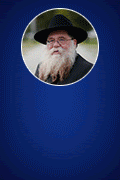Chabad's intention is to help “bring the spirituality of Judaism to people,” as nearly 3,000 other Chabad centers worldwide do.
South Euclid, OH — As a business deal, it's small potatoes.
Cash-short Ohio Workman's Circle found a buyer for its South Euclid building and property.
“We needed the money to continue,” said Neil Grossman, financial officer for the secular-Jewish nonprofit social agency.
A Surprising Deal in Jewish Community
Chabad’s intention is to help “bring the spirituality of Judaism to people,” as nearly 3,000 other Chabad centers worldwide do.
South Euclid, OH — As a business deal, it’s small potatoes.
Cash-short Ohio Workman’s Circle found a buyer for its South Euclid building and property.
“We needed the money to continue,” said Neil Grossman, financial officer for the secular-Jewish nonprofit social agency.
The sale, for about $300,000, is the latest sign that the 103-year-old institution with a bent toward preserving Yiddish language and culture is declining.
But the mid-October transaction carries a bigger message about two long-running forces in American Judaism.
The seller is part of a nationwide movement that grew from the socialist leanings of secular, working-class Jewish immigrants.
The buyer, Chabad Cleveland, is associated with a worldwide religious organization that practices the most traditional Jewish orthodoxy.
The deal surprised some scholars.
“It sounds like Workman’s Circle made a pact with the enemy,” said Edward Shapiro, an author and retired professor of Jewish history at Seton Hall University in New Jersey. Like many senior Jewish intellectuals, he connects strongly with the Yiddish cultural identity that emerged in the United States a century ago.
Shapiro and others believe that for an Orthodox organization to buy Workman’s Circle property marks a big shift in what it means to be an American Jew.
For decades, Jewish thinkers, writers, artists and activists dominated radical-left politics. In the 1960s, many of the same players took central roles in the black civil-rights movement, anti-war protests during the Vietnam years and the feminist revolution.
America’s fear of communism led to the persecution of many socialist sympathizers. But identification with anti-establishment and economic-justice causes came naturally to educated, politically active immigrants who fled intolerance and oppression in Eastern Europe.
Workman’s Circle, Shapiro said, “became one of a panoply of left-wing organizations immigrants established here, each representing some point along the socialist continuum.” Most turned their backs on religious Judaism but closely connected to the ethnic reality of, as Shapiro called it,
Yiddish communicates that identity as much as anything.
Reuben and Dorothy Silver perform in Yiddish onstage. In their Cleveland Heights kitchen, over strong coffee and biscotti, they recalled their years with Workman’s Circle and a Jewish community that usually doesn’t meet at temple on the Sabbath.
“Yiddish has given so much to American theater and, especially, humor,” Dorothy said. “And people tell us our skits and performances have meant so much to them,” Reuben said, completing his spouse’s comment, as the Silvers often do.
Ohio Workman’s Circle considers the Silvers heroes for their efforts to keep Yiddish alive. Promoting the language has been a hard sell. Second and third generations of most immigrant populations in America tend to drift away from the forebears’ language, and America’s Jews are no different.
Many benefits for members
Other services Workman’s Circle provides – including health care and burial insurance – have been a godsend for many families.
Alan Rosenbaum, a philosophy professor at Cleveland State University, said his former in-laws were avid members of the local Workman’s chapter.
“They joined for the burial benefit,” he said. Religious Jews observe strict rules regarding interment, which his in-laws didn’t want to follow. “Workman’s Circle arranged for secular burials,” so children and other relatives wouldn’t have to pay.
Far from most of Workman’s Circle’s values are those of Chabad, the Lubavitch Jewish organization that strictly follows traditional practices, including a paternalistic family structure, modest attire and an unvarying code of personal conduct and rigorous worship.
Only men may be rabbis; wives may not come in contact, even shake hands, with men who are not their husbands; kosher dietary restrictions abound; and no one works on the Sabbath.
Four years ago, Rabbi Yossi Marozov moved to Northeast Ohio with his wife and three children as an emissary of Chabad.
Working out of his home, he launched programs to help Jewish children and teenagers connect with traditional practices and embrace principles of Orthodox Judaism. Later, he leased space at the Workman’s Circle facility at 1980 S. Green Road. Over time, Marozov hatched a plan to buy the building, “give it a face-lift” and establish a small endowment for the kids program he calls Friendship Circle. That means raising money from the Jewish community. His target is about $1 million.
Workman’s Circle will lease space from Chabad for four years. The organization has made no plans beyond that.
Fundamentalist movements such as Chabad are among many efforts, religious and otherwise, to urge young Jews to retain their cultural traditions in a country in which they have only a small presence, said Jonathan Sarna, professor of American Jewish history at Brandeis University near Boston.
“Yiddish language and culture is a big part, but the Workman’s Circle hasn’t had much resonance with the young. Its class consciousness isn’t central to young Jews. My sense is that, really, it has been in decline for a long time.”
Sarna, like Shapiro, also sees the sale of a Workman’s Circle property to the growing Orthodox organization as “deeply ironic” because the groups have had few points of connection.
Family ties run deep
His intention is to help “bring the spirituality of Judaism to people,” as nearly 3,000 other Chabad centers worldwide do.
But when he first met with members of the secular Workman’s Circle, to conduct children’s programs in its building, “I found I spoke Yiddish better than almost anyone there. I speak Yiddish to my children at home. There’s a strong connection among us.
”If you want to cut to the chase,“ he said, ”we look to the Jewish community as family, whether secular or religious. In families, you have differences, but at the end of the day, you have to say they’re secondary.”
Marozov found common ground with the secular branch of his family, he said, because of what he sees as the deepest value of Jewishness, kindness.
It’s what Workman’s Circle brought Jewish immigrant families in their new home amid such harsh American insularity: some small financial security through insurance and a place to share conversation, music and theater in a common language.
In a country that sometimes looks to the past for its map to the future, Brandeis’ Sarna said, both Workman’s Circle and Chabad can contribute beyond their rich Jewish culture.
Marozov agreed and believed a powerful way would be to help instill the world with more kindness.












